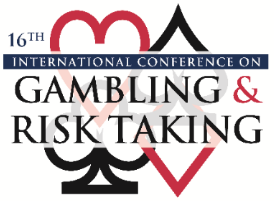Session Title
Session 2-3-A: Population Research on Problem Gambling
Presentation Type
Event
Location
The Mirage Hotel & Casino, Las Vegas, Nevada
Start Date
8-6-2016 2:00 PM
End Date
8-6-2016 3:30 PM
Disciplines
Economics | Mental and Social Health | Psychology | Statistics and Probability
Abstract
We develop surveys of gambling problems in the general Danish population. We compare several popular survey instruments of gambling behavior and gambling propensity to assess if they differ in their classification of individuals. We also examine correlations with standard survey instruments for alcohol use, anxiety, depression and impulsiveness. A feature of our design is that nobody was excluded on the basis of their response to a “trigger,” “gateway” or “diagnostic item” question about previous gambling history, allowing us to check for sample selection bias. Our sample consists of 8,405 adult Danes, which is 12.8% of the sample frame of 65,592 Danes who were contacted. The sample is stratified according to age and sex across three regions in Denmark, with a 50% weight on the sample from greater Copenhagen and a 25% weight on each sample from the two other regions. We administered the Focal Adult Gambling Screen (FLAGS) to all subjects and find that 80% of the sample has no detectable risk, 12% has an early risk, 3.9% has an intermediate risk , 3.3% has an advanced risk, and 1.1% (95 subjects) can be classified as problem gamblers. We also find a significant correlation with the levels of other gambling risk instruments, including the Problem Gambling Severity Index (PGSI) and the instruments measuring alcohol use, anxiety and depression. There is no significant correlation between gambling risk and impulsivity. We find significant evidence of sample selection effects from using threshold gambling questions: the traditional use of these questions lead to much larger levels of detectable gambling risk.
Keywords
Gambling, alcohol, anxiety, depression, impulsiveness, FLAGS, PGSI
Included in
Economics Commons, Mental and Social Health Commons, Psychology Commons, Statistics and Probability Commons
Gambling Problems in the General Danish Population: Survey Evidence
The Mirage Hotel & Casino, Las Vegas, Nevada
We develop surveys of gambling problems in the general Danish population. We compare several popular survey instruments of gambling behavior and gambling propensity to assess if they differ in their classification of individuals. We also examine correlations with standard survey instruments for alcohol use, anxiety, depression and impulsiveness. A feature of our design is that nobody was excluded on the basis of their response to a “trigger,” “gateway” or “diagnostic item” question about previous gambling history, allowing us to check for sample selection bias. Our sample consists of 8,405 adult Danes, which is 12.8% of the sample frame of 65,592 Danes who were contacted. The sample is stratified according to age and sex across three regions in Denmark, with a 50% weight on the sample from greater Copenhagen and a 25% weight on each sample from the two other regions. We administered the Focal Adult Gambling Screen (FLAGS) to all subjects and find that 80% of the sample has no detectable risk, 12% has an early risk, 3.9% has an intermediate risk , 3.3% has an advanced risk, and 1.1% (95 subjects) can be classified as problem gamblers. We also find a significant correlation with the levels of other gambling risk instruments, including the Problem Gambling Severity Index (PGSI) and the instruments measuring alcohol use, anxiety and depression. There is no significant correlation between gambling risk and impulsivity. We find significant evidence of sample selection effects from using threshold gambling questions: the traditional use of these questions lead to much larger levels of detectable gambling risk.


Comments
Attached: PDF containing 34 slides